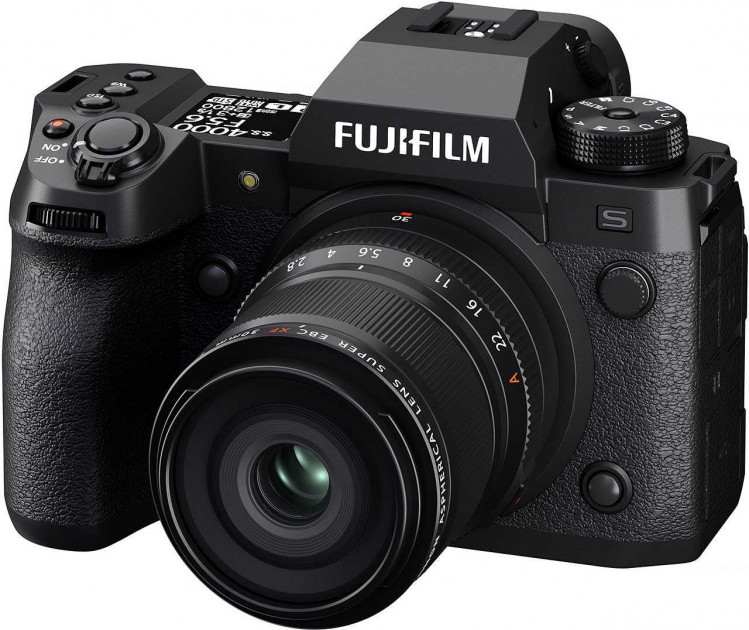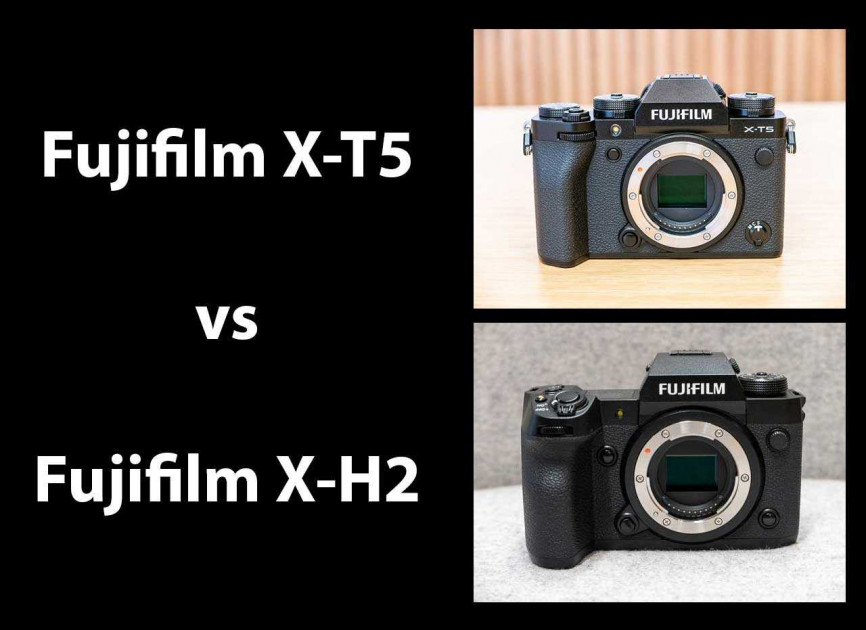
Although they share similar key specifications and features, the XT5 and the XH2 that were both released in 2022 actually differ a lot when it comes to their appearance and control layout, with the former also being priced slightly lower than the latter.
So we’re bringing you this in-depth Fujifilm X-T5 vs X-H2 head-to-head comparison to help you choose between these two mirrorless cameras.
You can also read our detailed Fujifilm X-H2 review to find out exactly what we think of that camera.
Sensor
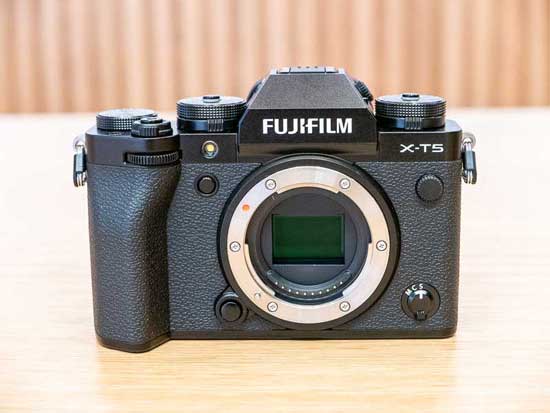
Both of these cameras use exactly the same, brand new 40.2 megapixel sensor, offering much greater resolution then the 26 megapixel sensor that’s used by the likes of the X-H2S, X-Pro3 and X-T4.
They use the same X-Trans CMOS 5 HR sensor, with HR standing for High Resolution.
This is a BSI (back-side illuminated) sensor design that has much more of a focus on detail and resolution than out-and-out speed.
While it allows the XT5 to record 6.2K/30p video, the XH2 actually surpasses it by offering up to 8K/30p video recording.
Pixel Shift Multi-shot
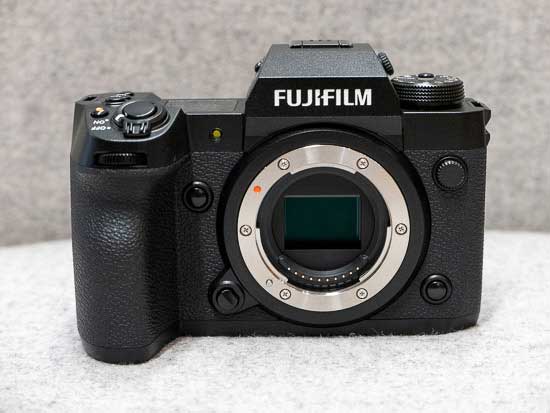
Both models feature the special Pixel Shift Multi-Shot mode, which delivers 160 megapixel images for the ultimate quality when detail really matters.
Previously only seen on the company’s GFX-branded medium-format cameras, in the Pixel Shift Multi-Shot mode the camera records 20 frames, shifting the sensor by 0.5 pixels between each frame.
The resulting images are automatically combined into one DNG RAW file, which can then be output to a desired file format using suitable RAW processing software.
ISO Speed
Both cameras have the same native sensitivity range of ISO 125 to ISO 12,800, which can be expanded down to ISO 64 and up to ISO 51,200.
Video
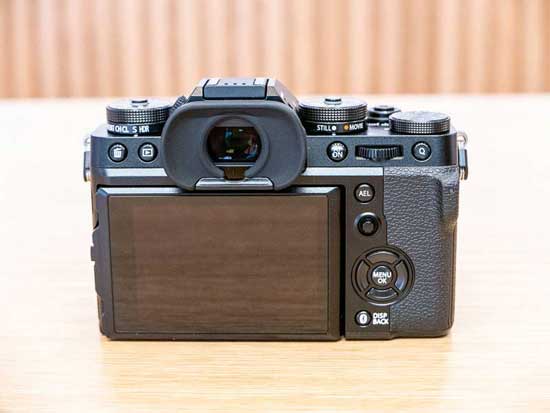
The X-H2 offers a slightly better video mode than the X-T5 and is the one to buy if you’re predominantly a videographer, although this new model certainly gives it a run for its money.
The XH2 offers a highest quality rate of 8K/30p with no crop recorded in 4:2:2 10-bit internally for approximately 160 minutes.
The XT5 can’t record at all in 8K, despite using the same sensor, topping out at 6.2K/30p with a modest 1.23x crop recorded in 4:2:2 10-bit internally.
Both cameras support up to DCI 4K/60p recording with no cropping, and both can shoot 1080/240p slow-motion footage.
They also offer the new F-Log 2 profile with up to 14+ stops of dynamic range.
Combined with a compatible HDMI recording device from Atomos or Blackmagic Design, 12-bit RAW video output from both cameras can be recorded as Apple ProRes RAW or Blackmagic RAW.
They also feature a digital zoom function that uses the camera’s 40.2MP sensor to deliver up to 2x of digital zoom with little to no loss in resolution, when recording video in 4K.
The X-H2 has a much larger buffer which increases the maximum available affect bit rate for video in comparison with the X-T5.
Also, you can’t fit an external cooling fan to the XT5, unlike the XH2, and because it’s substantially smaller there is no full size HDMI or 3.5mm headphone socket on the XT5 either.
Autofocus
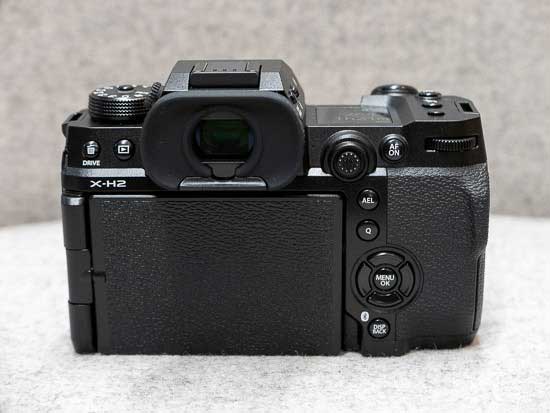
Both cameras have exactly the same hybrid autofocus system with phase detection and and contrast detections points.
In the Single point AF mode there are up to 425 selectable AF points arranged in a 25×17 grid. Alternatively, the camera can be set to 117 points in a 13×9 grid, and the size of the points can also be varied.
In addition to Single point AF, there’s Zone AF which allows the AF points to be selected in 3×3, 5×5 or 7×7 groups, and Wide/Tracking AF.
They can automatically detect animals, birds, cars, bikes, planes and trains thanks to the X-Processor 5’s AI deep learning capabilities.
Thanks to the 40 megapixel sensor, they also offer a greater number of PDAF points (3.3 million) than previous X-series cameras.
Fujifilm have also further improved the auto-focus algorithm, claiming that the AF system is 3x faster on the X-T5 than on the previous generation models, and also with better eye/face detection.
Burst Shooting
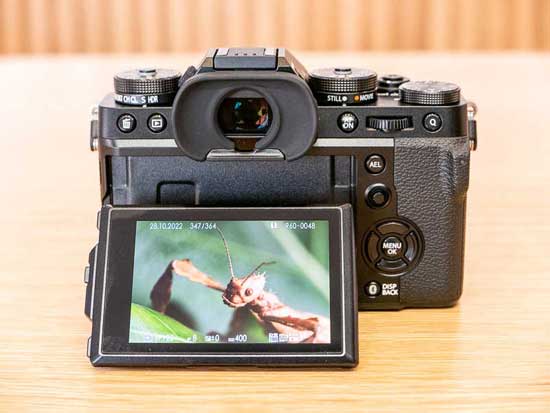
Both models offer exactly the same burst shooting rates.
They can shoot at 20fps when using the electronic shutter, with a 1.29x crop applied,and both offer the same 15fps continuous shooting speed when using the mechanical shutter.
There is one very important difference between them, and that’s the size of the internal buffer.
Whereas the XH2 can record up to 1000+ JPEGs or 400 RAW files at 20fps, the X-T5 can only manage a comparatively meager 119+ JPEGs or 19 RAW files before the continuous shooting rate starts to slow down.
Shutter Speed
These new cameras improve the fastest shutter speed for the electronic shutter by 2.5 stops, from 1/32000 sec on the previous generation to 1/180000 sec.
This allows users to leave the aperture wide open in very bright conditions such as a sunny beach or a ski slope, or to capture a split-second motion.
Body and Design

The design of the body and controls is the biggest difference between the XT5 and the XH2.
On the latter camera, Fuji decided to remove a lot of their usual traditional dials and controls and added a lot more Function buttons.
Most notably, the classic Fujifilm ISO, Shutter Speed and Exposure Compensation dials that are still found on top of the XT5 made way for a PASM dial on the XH2.
Fujifilm also added a huge number of Custom modes to the Shooting Mode dial – 7 in fact – to help compensate for those changes.
If you’re a fan of the traditional dials and controls that Fuji users have come to know and love, the X-T5 is clearly the camera for you.
IBIS
The XT5 is the sixth Fujifilm camera to feature 5-axis in-body image stabilisation (IBIS), following on from the X-H1, X-H2, X-H2S, X-H2 and the X-S10.
Both models provide up to an impressive 7 shutter steps of compensation for stills.
Viewfinder
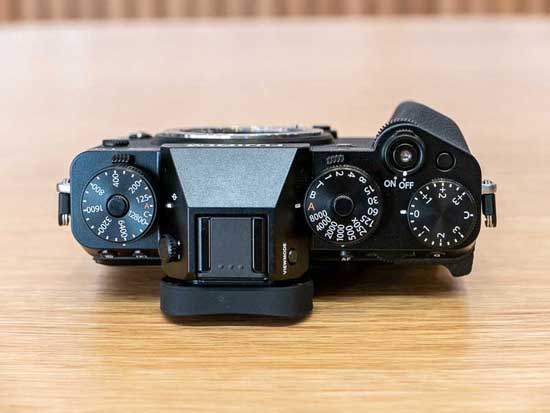
The X-T5 has a very good 3.68M-dot OLED electronic viewfinder with 0.75x magnification, 100fps refresh rate and a built-in eye sensor.
The X-H2 has an even more detailed 5.76M-dot OLED electronic viewfinder with larger 0.80x magnification and a faster 120fps refresh rate.
LCD Screen
One of the biggest differences between these two cameras is the action of the LCD screen.
Fujifilm have gone back to a 3-way tilting LCD on the new X-T5, rather than the vari-angle screen on the X-H2, saying that it better matches the more stills-focused nature of the newer model.
The resolution of the screen has also been increased slightly from 1.62M-dots to 1.84M-dots, making it the highest-res screen of any current Fujifilm APS-C camera.
Memory Cards
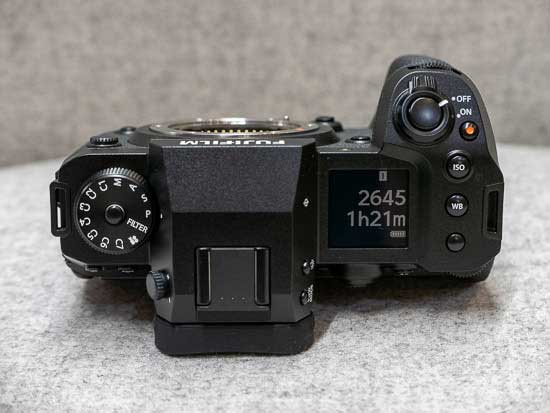
The X-H2 has dual memory card slots, just the X-T5, but unlike the newer model which has two UHS-II SD card slots, the X-H2 has one UHS-II SD slot and one CFexpress Type B slot.
Battery Life
Fujifilm are claiming that the X-T5 offers 740 shot battery life in economy mode, which is actually 60 frames more than the XH2.
Both cameras can also be powered and charged via a USB-C connection, which is useful if you’re out and about and have a compatible power-bank to plug the camera into.
Vertical Battery Grip
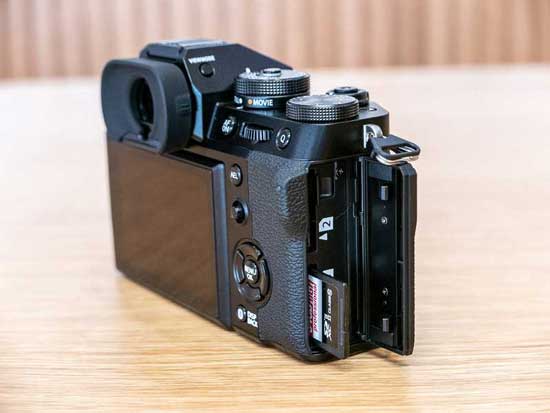
Perhaps somewhat controversially, the new X-T5 does not support a vertical battery grip (there are no contacts on the bottom of the camera).
Fujifilm say this is based on market data for the X-T4 which showed that the majority of owners did not buy one.
Instead you can buy the optional MHG-XT5 metal hand grip if you feel than the body on its own is too small.
The X-H2 does support a vertical battery grip, which as well as making handling easier in portrait mode, greatly increases the available battery life to 1,760 frames in economy mode.
Price
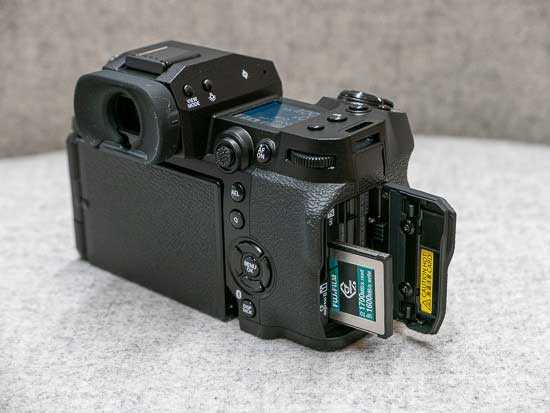
The new Fujifilm X-T5 is priced at £1699 / $1799 body-only in the UK and USA respectively.
The Fujifilm X-H2 is priced at £1899 / $1999 body only, making it £$200 more than the XT5.
Conclusion
The new Fujifilm X-T5 retains the classic retro styling and control layout of its XT4 predecessor and combines it with the same 5th generation sensor and processor as used by the X-H2.
The XT5 provides exactly the same image quality as the XH2, but it doesn’t offer 8K video recording, has a much smaller buffer, uses slower memory cards, has a lower-spec EVF, doesn’t have full size HDMI or 3.5mm headphone sockets, and doesn’t support an external cooling fan or a vertical grip.
There’s only a relatively small price difference between them, so what do you think? Would you choose the new, retro X-T5 or the more conventional but slightly more capable X-H2? Leave a comment below!

